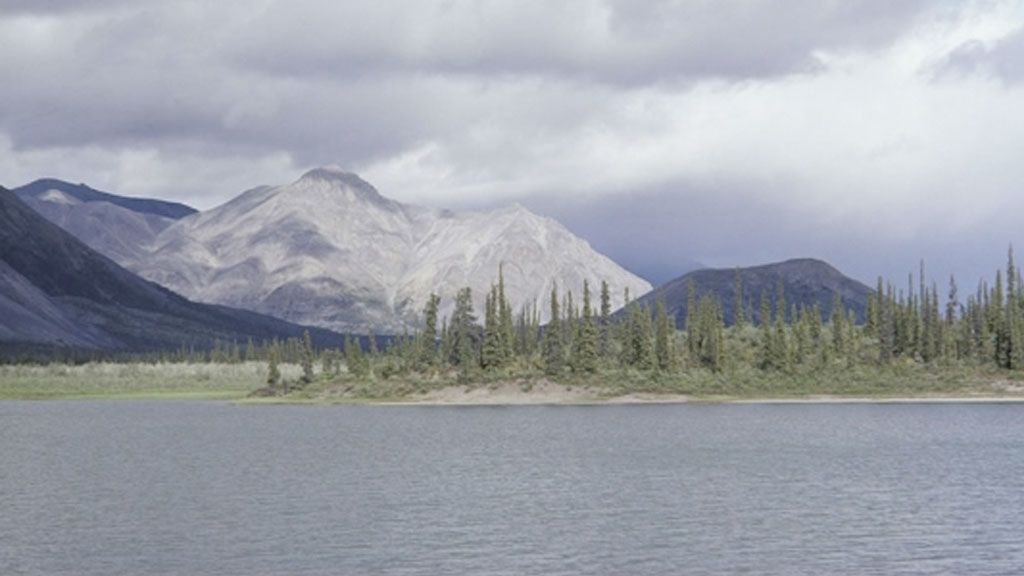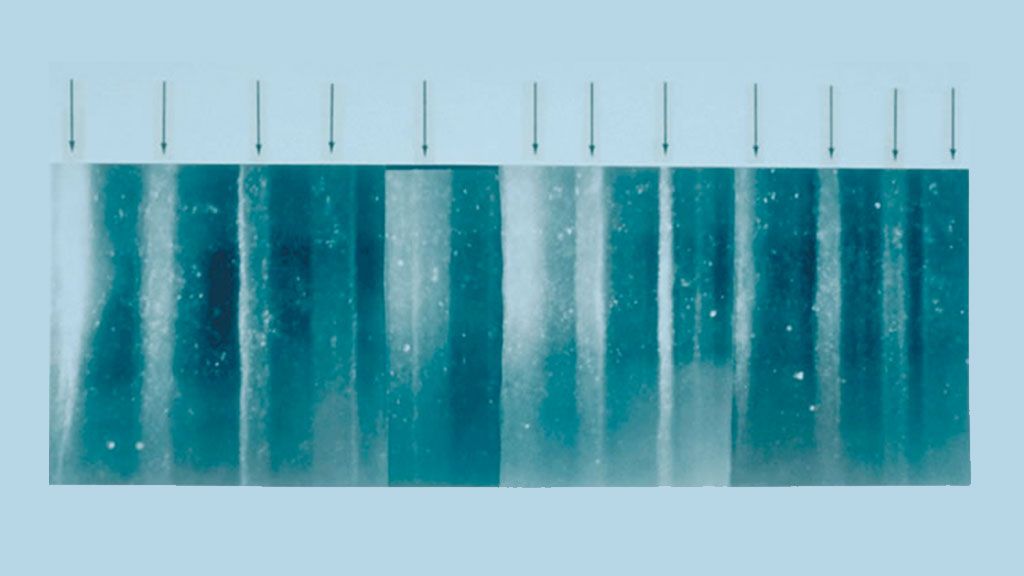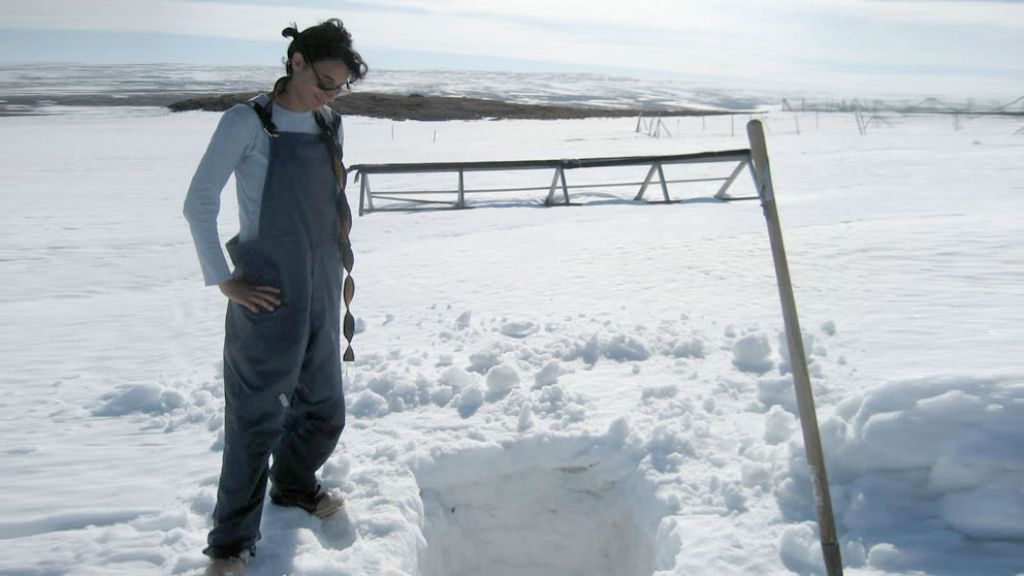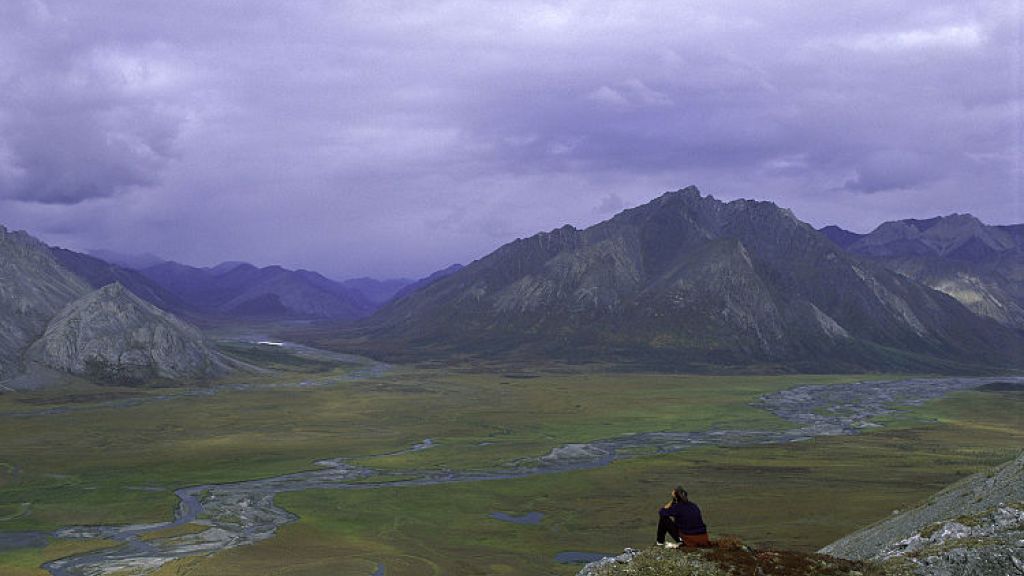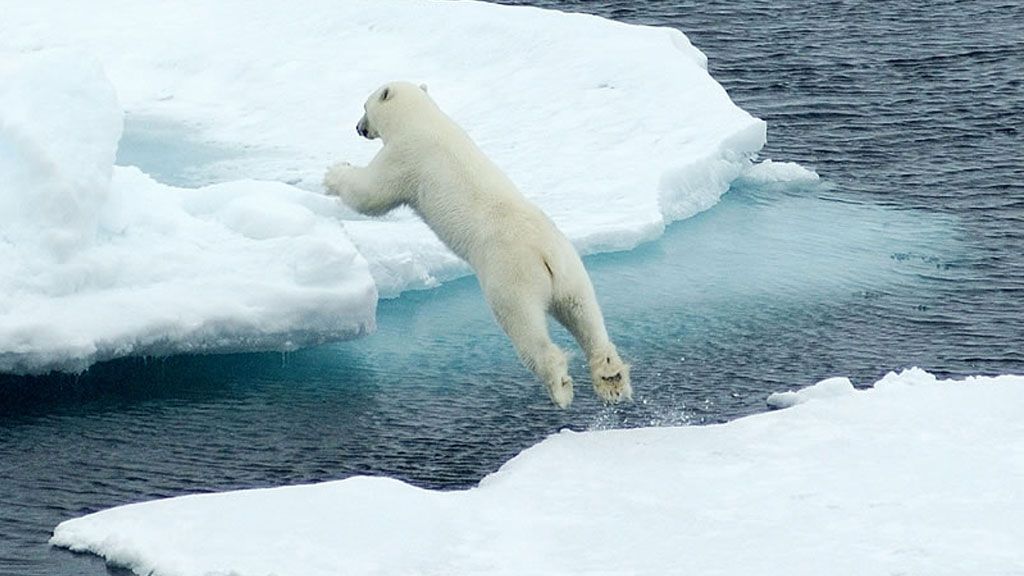Examining the reverse in the Arctic cooling trend
Lake in Sheenjek River Valley, Alaska
© US Fish and Wildlife Service
Professor Darrell Kaufman, Professor of Geology and Environmental Science at Northern Arizona University, has been studying past climate changes in Alaska for the last 20 years. His current research is aimed at using evidence from previous climate changes to help understand present and future climate changes. Professor Kaufman is also currently coordinating a large multi-investigator project to generate and compile proxy climate records from Arctic lakes.
A recent study for which Professor Kaufman was the lead author had a look at the trend in Arctic temperatures over the last 2,000 years by using data from lake sediment cores, tree rings, and ice cores to reconstruct temperatures in the Arctic on a decadal (ten-year) time scale. The study concluded that the Arctic saw a general cooling trend from the first century until the middle of the 20th century, after which average temperatures in the Arctic began to rise abnormally outside of expected natural variation, with the last decade being the warmest decade over the 2,000 years. The sudden dramatic rise in temperatures is believed to be caused primarily by the accumulation of anthropogenic greenhouse gas emissions in the atmosphere.
Here Professor Kaufman discusses the results of the study and describes what we know about Arctic climate since the end of the last Ice Age, 11,000 years ago to present (also called the Holocene).
Is this the first time any research has looked back this far with such detail?
The study is a synthesis of previously published work. Each of the individual records that were integrated into the summary had already been peer-reviewed and scrutinized on its own. Many of the records from Arctic lakes were published for the first time earlier this year by our research group. The lake records provided the critical mass of new evidence that we need to examine the Arctic as a whole, especially for the first millennium AD.
This is the first time that all available proxy temperature records had been compiled at such a high resolution - at ten-year intervals - going back 2,000 years. The last synthesis of information at similar resolution for the Arctic went back only 400 years, and was published 12 years ago.
Getting a resolution down to a decadal time scale is quite precise. How were you able to do this?
Most all of the proxy temperature records were resolved at an annual time scale, so we could interpret summer temperatures from year to year. We focused on tree rings, ice cores and lake sediments, and nearly all were resolved annually and could be dated by layer-counting. Each season leaves a distinct band in the tree, in the ice core, or in the lake sediment, and the bands can be counted back in time.
A few of the lake records didn't have these annual layers, so we used other methods of dating that are probably accurate to within a decade. We chose a decadal time scale (ten-year slices) as the common denominator for all the records. We smoothed the annual records to make them decadal so we could combine all of the records to create the synthesis.
Have there been studies that have gone further back but with a much lower resolution?
Yes. We've known for a while that summer temperatures in the Arctic were high just following the last Ice Age, as the great ice sheets retreated. Between 10,000 and 6,000 years ago, temperatures were warm in the Arctic during the period known as the Holocene Thermal Maximum (HTM). For example, we have evidence that some mountain glaciers that exist today didn't exist then. After the HTM, temperatures generally cooled until the beginning of the 20th century. The relatively warm conditions we detected from 2,000 years ago and the progressive cooling that took place after was actually already in progress beginning about 8,000 years ago.
And why was this?
It's caused by the precession (wobble) cycle of the Earth's axis of rotation, which completes a cycle about every 22,000 years, combined with the elliptical-shaped path of the Earth's orbit around the sun. Each year there's a point where the Earth is closest to the sun (perihelion) and a point when it's furthest away (aphelion). Each year the time at which this happens changes slightly as the precession cycle progresses.
The Earth is furthest from the sun on July 4th. But around 11,000 years ago, the Earth was closest to the sun in the middle of the boreal (Northern Hemisphere) summer, and that's when temperatures rose and the ice sheets melted. Since then, the precession of the Earth's axis of rotation has resulted in a steady decrease in the amount of sunlight that the Arctic receives during the summer. And while this decrease in sunlight is continuing, our study shows that the natural cooling trend has not.
Around the beginning of the 20th century, Arctic summer temperatures started to become warmer again. By the middle of the 20th century temperatures increased beyond the natural variability that was common for the preceding 1,900 years, and the last few decades have been the warmest of any similar period that preceded it. If we project the cooling trend of the 1900 years prior to the 20th century up to the present, then by the mid-20th century temperatures should have been about 0.5°C lower than they actually were. And between 1998 and 2008, temperatures were 1.4°C higher.
Until the mid 20th century, the natural trend in the Arctic was towards cooling, and we understand the cause of that overall cooling with a great deal of confidence. The unusually high temperatures of the 20th century not only are outside the normal variability of the previous 1,900 years, they reversed the expected cooling trend.
On a geologic time scale, how significant is this rapid warming?
Rapid climate changes have occurred before in the Earth's history. For example, when the ice sheets were melting, about 14,000 to 12,000 years ago, there were brief intervals when temperatures increased at a pace about equal to the rise we've seen during the last half-century.
Unlike the current period of rapid warming, during the deglacial period thousands of years ago there were mechanisms in play to cause rapid climate change. They involve the release of large volumes of meltwater that were impounded by the melting ice sheets. Once this fresh water was released into the ocean, it caused a significant drop in temperatures by shutting down deepwater formation in the North Atlantic, which drives thermohaline circulation and the Gulf Stream and is responsible for bringing warm ocean currents to eastern North America and Western Europe. Following the cold snaps, the deep-ocean circulation flipped on again and much of the globe warmed up again. This kind of mechanism no longer exists in the present-day climate system. Other factors that cause climate to change are now in play.
How has the level of greenhouse gases evolved since the last Ice Age and the beginning of the current interglacial period (Holocene)? Were levels of greenhouse gasses elevated during the Holocene Thermal Maximum?
Past changes in the amount of carbon dioxide (CO2) in the atmosphere are well known from air bubbles trapped in ice cores. Following the last Ice Age, the concentration of CO2 increased by about 100 parts per million. Since the industrial revolution, humans have added another 100 parts per million. Water vapour, which is responsible for the majority of natural greenhouse effect, also increased following the last Ice Age as the warming atmosphere also became moister. During the Holocene Thermal Maximum, levels of greenhouse gasses were much lower than they are at present. Warmer temperatures during the HTM were due to the increase in summer sunlight the Arctic received at the time, which was greater than it is today because of Earth's orbital cycles. My hunch is that the temperatures of the last decade are approaching those of the HTM in the Arctic, and they will exceed those of the HTM during the 21st century. But it's difficult to compare because the HTM was primarily a summer-time warming in the Arctic, whereas the current period of warming is most pronounced during the winter and transitional seasons.
So does this mean that right now the sun is closest to the Earth during the austral (Southern Hemisphere) summer?
Yes. This partly explains the concern about the harmful effects of ultraviolet radiation in the Southern Hemisphere. Over tens of thousands of years, the effect of the orbital cycles on the amount of sunlight received during each season is generally opposite in the two hemispheres. However changes in the Northern Hemisphere seem to dominate the global climate. The Northern Hemisphere has greater land area on which to grow ice sheets. The amount of glacier ice on Earth influences the global energy balance by controlling its overall brightness (albedo), and thereby how much solar energy is reflected back to space by the bright ice versus absorbed by dark land area. The Southern Hemisphere, on the other hand, is mostly ocean, and the Antarctica Ice Sheet extends to the coast in most places, so less has changed during glacial - interglacial cycles.
Does the sheer thickness of the Antarctic Ice Sheet and the fact that you have the Antarctic Circumpolar Current (ACC) circling Antarctica create a thermal barrier prevent the Southern Hemisphere's climate from fluctuating wildly and preventing the Southern Hemisphere from influencing global climate as much?
The ACC to some degree does buffer Antarctica from climate changes that are felt elsewhere on the planet. Temperatures across most of Antarctica are always well below freezing, so the implications of global warming for melting ice in Antarctica are less important than in the Arctic, where summer temperatures rise above freezing. There are, on the other hand, important concerns about the on-going sea-level rise and its potential to destabilize the floating margins of the Antarctica Ice Sheet, causing more ice to slip off of the continent and into the ocean, resulting in even more sea-level rise.
Has your synthesis been used to make models to project what might happen to the Arctic in the future?
Not directly, but an important contribution of our work was to test a climate model that is being used to predict future climate change, and which figured prominently in the most recent IPCC Assessment Report. My co-authors from the National Center for Atmospheric Research (NCAR) compared the output from the Community Climate System Model (CCSM3) to our temperature reconstruction to assess how well the two matched.
The model was run for a 2,000-year period during which the model's climate was forced primarily by orbital changes. In other words, the model simulated the influence of the Earth's precession cycle on temperatures in the Arctic, and the amount of cooling registered in the model matched the amount of cooling that was detected in our temperature reconstruction prior to the 20th century.
So the ability of the model to accurately simulate the impact of factors that we know cause the climate to change gives us confidence in its predictive capabilities. Getting the sensitivity of the model to changes in climate forcing correct is especially important for the Arctic, where the effects of global warming are amplified.
Are there plans to do a study of such a high resolution to look even further back?
We're presently working to extend the records further back in time. We're especially interested in the HTM and in the transition to a colder Arctic that occurred afterwards - what thresholds were crossed to extend the duration of ice cover over the Arctic Ocean, for example. We want to use the evidence from past global changes to study the non-linear behaviour of the Arctic system, including thresholds that can cause relatively rapid climate changes in either direction.
We also are getting records from more lakes across the Arctic. These additional records will help us to reconstruct the geographic pattern of changes in temperatures, which will help to better understand how overall warming is translated into changes on a more local scale, including shifting weather patterns.
Read the second part of this interview.

Darrell Kaufman
Darrell Kaufman is a Professor of Geology and Environmental Science at Northern Arizona University. His research interests focus on geologic records of environmental and climatic changes that took place during the recent past in order to help understand present and future climate changes. More specifically, he studies climate variability from Arctic lakes, climatic records from southern Alaska lakes, sedimentary records of environmental change, and amino acid geochronology. Professor Kaufman is also coordinating a large multi-investigator project to generate and compile proxy climate records from Arctic lakes.

